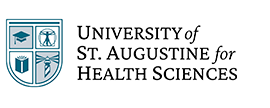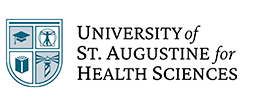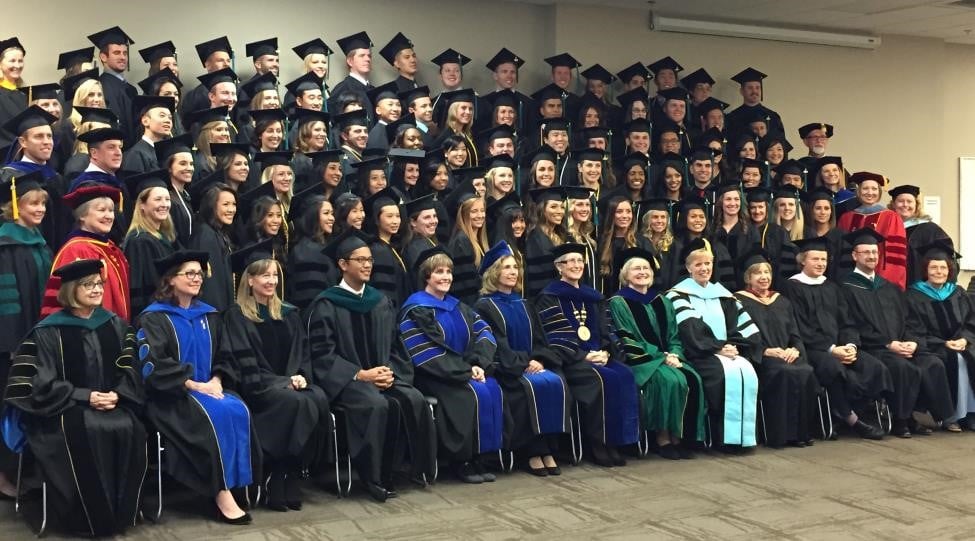
The United States is facing a critical nursing shortage that is expected to continue through 2030.1 Let’s consider the question, “Why is there a nursing shortage,” as well as what the nursing shortage statistics reveal and what strategies nurses can use to navigate the challenges of the nurse shortage.
The Growing Nurse Shortage
America’s nurses demonstrated exceptional bravery and dedication during the COVID-19 pandemic, often featured on front-page news as symbols of resilience. The crisis placed a significant strain on the healthcare system, with nurses facing limited staff and resources while providing critical care. The nursing shortage in the U.S. was a longstanding challenge, brought back into the spotlight by the pressures of the pandemic.
The United States has experienced nursing shortages periodically since the early 1900s. Multiple factors led to each nurse shortage, from world wars to economic recessions. However, the magnitude of the current nursing shortage, announced in 2012, is greater than ever before.2
Given the growing demand for healthcare services across various specialties, reports project that 1.2 million new registered nurses (RNs) will be needed by 2030 to address the current nurse shortage. Nursing schools and graduate nursing programs are working to accommodate the rising demand for skilled nurses and nurse leaders, however, they encounter challenges.
Why Is There Still a Nursing Shortage?
High demand and low supply have created the current nursing shortage, and several unique factors have led us to this point.
Are Nurses in Demand?
From 2023-2033, the U.S. Bureau of Labor Statistics is predicting that demand for registered nurses will increase by 6%.3 Healthcare facilities are searching for skilled RNs due to increased patient demand.
The country has a larger population over the age of 65 than ever before, composed primarily of baby boomers (those born between 1946 and 1964). This 65+ demographic has grown rapidly, jumping from 41 million people in 2011 to 71 million in 2019—a whopping 73% increase.4 The U.S. Census Bureau expects the number to continue to rise, estimating it will reach 73 million by 2030.5
Improved and more accessible healthcare has contributed to a growing senior population that increasingly requires medical services for age-related conditions. Longer lifespans extend the period when patients need care, intensifying demands on an already strained healthcare system and worsening the nursing shortage.
The Retirement Drain
The population surge from the baby boomer generation has led not only to a greater number of aging patients but also means that a large portion of the nursing workforce is heading toward retirement – which makes the nurse shortage even more severe.
In 2022, the median age of employed registered nurses was 46 years old, and more than 25% of all RNs say they will retire or leave the nursing field within the next five years.6 As they leave, they take with them a wealth of accumulated knowledge and nursing expertise.
COVID-19 created a wave of artificial early retirements due to the extended period of limited access for patients and staff to medical facilities. As hospitals stopped doing elective surgeries and patients delayed care, hospitals had less income and needed to reduce staff to stay afloat. In response, many hospitals forced furloughs on their employees.7
The Location Factor
When reviewing nursing shortage statistics at state and national levels the numbers can be confusing. The Bureau of Health Workforce projects that California will face the largest number of nursing shortages of any state, with a projected shortfall of 65,000 nurses by 2037. In terms of percentages according to population density, it’s North Carolina and Washington with the projected largest nursing shortage (22%) by 2037. In contrast, Wyoming will have a projected 77% surplus of RNs by 2037. Focusing only on states with better staffing levels can create the false impression that the nurse shortage has been resolved or that it was never a significant issue.8
Rural communities absorb more impacts of the nursing shortage than do metropolitan areas. Only 16 percent of RNs live in rural areas, serving over 52 million Americans.9
The Educator Exodus
As the median age of the RN population has increased, so has the age of RNs who have stepped into an educator role. They, too, are looking toward retirement, leaving nursing schools without a strong pipeline of teachers to take their place.6
According to the American Association of Colleges of Nursing (AACN), faculty shortages at nursing schools across the country limit student capacity. “Budget constraints, an aging faculty and increasing job competition from clinical sites have contributed to this nurse shortage crisis.”10 In light of the ongoing decrease in faculty numbers, fewer graduates will join the workforce.
Stress of the Job
The heightened stress levels of today’s nurses are due to more than just the pandemic, the need to make urgent life-altering decisions and working long hours. All these factors and more, working together, weigh on the shoulders of many RNs and contribute to the ongoing nurse shortage.
Ongoing budget tightening has led many healthcare facilities to cut staffing levels, leaving a major imbalance in the workloads for the remaining nursing staff. This was especially true during the pandemic. Many hospital employees shifted from their usual departments and roles to assist with intensive care of COVID-19 patients.11 Most nurses are dedicated to helping patients anyhow they can; however, it’s stressful to be thrown into a new area of nursing on short notice—especially an area as demanding as critical care.
The Impact of the Nursing Shortage


Source: Patient Safety and Quality: An Evidence-Based Handbook for Nurses12
The nursing shortage of skilled RNs entering and remaining in the workforce affects patient care and other members of the healthcare team. Nurses are so critical to healthcare delivery that any challenge they face impacts us all.
Higher Risk of Nurse Burnout
Overwhelmed frontline RNs confront a persistent risk of nurse burnout – a term that barely encompasses the profound physical and emotional exhaustion they endure. This exhaustion stems from heavy workloads, long hours and the pressure of treating critically ill patients.
Pandemic or not, a nurse shortage is guaranteed to add layers of stress to other staff. The weight of life-altering decisions that must be made constantly and the knowledge that there is never enough time to provide for your patients can undermine staff efficacy and exacerbate personnel shortages.
Higher Risk of Medication Errors and Death
A 2021 study revealed that in Illinois, a patient’s risk of dying within 30 days of admission increased by 16% for every additional patient added to a nurse’s average workload.13 Another study conducted in California correlated an 8.9% decrease in pneumonia infections among surgical patients to an increase of one additional work hour per RN.12
Longer Wait Times and Shorter Visits
As the nursing shortage reduces staff availability, patients experience longer wait times for care. With the growing number of patients seeking medical assessments and treatments due to an aging U.S. population, extended waits and brief visits have become increasingly common.
Nursing Shortage Solutions
For such a complex problem, there is no simple solution. There are strategies and practices that we can examine and put into play today. Advances in nursing education, the workplace and at the policy level may spark the change.
Greater Access to Education
Education is the bedrock for growing the population of skilled nurses. Creating programs incentivizing students to enroll in nursing school, complete their studies and continue their education to upgrade their skills and careers is one strategy for increasing enrollments and combating the nursing shortage. Registered nurses with a Bachelor of Science in Nursing (BSN) typically have stronger job prospects.
Naturally, encouraging nurses to earn their graduate-level credentials, such as a Master of Science in Nursing (MSN) or a Doctor of Nursing Practice (DNP), will increase the pool of highly skilled nurses and improve patient outcomes. Nurses with graduate degrees can serve in leadership roles, in advanced levels of patient care or as educators.
Flexible options, such as the learning pathways offered at the University of St. Augustine for Health Sciences (USAHS), are critical to recruiting and retaining engaged students—especially working nurses who fit school into their busy schedules.
Strategic Workplace Accommodations and Flexibility
Nurse executives are responsible for creating a workplace culture that supports nursing staff and entices experienced nurses to remain on staff. For example, beyond simply improving compensation and benefits packages, executives can empower nurses to create their schedules and reward senior nursing staff for mentoring new nurses; programs like this can positively impact on employee retention during a nursing shortage.14
As modern technology continues to shape healthcare delivery, the flexibility of telehealth and travel nursing creates new paths for some nurses to continue doing their good work in creative ways. Increased opportunities for career development will help position the profession as an attractive, desirable job opportunity and potentially decrease the nursing shortage.
Lobbying and Advocacy
Everyone who benefits from the skilled hands and minds of public health RNs across the U.S. should be encouraged to advocate during the policymaking process at the state and federal levels. For example, the American Nursing Association (ANA) currently works with legislators on diverse topics, such as workplace health and safety, appropriate staffing and reducing gun violence. The ANA provides an RN activist toolkit to help get you started.15
Opportunities Created by the Nursing Shortage
Thankfully, the current nursing shortage has a positive side: opportunities for career growth. The healthcare industry is considered to be recession-proof, which translates to potential long-term job security.
- According to the 2024 U.S. News & World Report list of the 100 Best Jobs, nurse practitioner takes first place. Seven of the top 20 Best Jobs are in healthcare, including speech-language pathologist (#10) and occupational therapist (#19).16
- Nurses are the largest segment of the healthcare workforce. They’re also the primary providers of patient care in hospitals and are the ones in charge of most of the nation’s long-term care.6
No healthcare system can function without skilled nurses. Nursing shortages are documented around the globe, with a recent report from the World Health Organization (WHO) noting that the world may be short 5.7 million nurses by 2030.17
The U.S. experience with the pandemic brought the reality of the nursing shortage in 2020 and beyond into sharp focus. With a better understanding of the question, “Why is there a nursing shortage,” and knowledge of how we can improve the situation and how nurses can take advantage of the opportunities it brings, we can hope to shift the tide.
The University of St. Augustine for Health Sciences (USAHS) offers a Master of Science in Nursing (MSN), a Doctor of Nursing Practice (DNP) and Post-Graduate Nursing Certificates designed for working nurses. Our degrees are offered online, with optional on-campus immersions.* Role specialties include Family Nurse Practitioner (FNP), Psychiatric Mental Health Nurse Practitioner (PMHNP)** and Nurse Executive. The MSN and DNP have options to accelerate your time to degree completion. Earn your advanced nursing degree while keeping your work and life in balance.
*The FNP role specialty includes one required hands-on clinical intensive as part of the curriculum.
**The Psychiatric Mental Health Nurse Practitioner role specialty is not available for the DNP program.
Sources
- Edward Mehdaova, “Strategies to Overcome the Nursing Shortage,” Walden University, 2017, https://scholarworks.waldenu.edu/cgi/viewcontent.cgi?article=5933&context=dissertations.
- Linda Workman, “Confronting the Nursing Shortage,” Nurse Key, August 7, 2016, https://nursekey.com/confronting-the-nursing-shortage/.
- Bureau of Labor Statistics, U.S. Department of Labor, “Registered Nurses: Job Outlook,” Occupational Outlook Handbook, August 29, 2024, https://www.bls.gov/ooh/healthcare/registered-nurses.htm#tab-6.
- Lisa Haddad, Pavan Annamaraju, et al., “Nursing Shortage,” StatPearls Publishing, February 13, 2023, https://www.ncbi.nlm.nih.gov/books/NBK493175/.
- U.S. Census Bureau, Population Division, “Projected Age Groups and Sex Composition of the Population: Projections for the United States, 2017–2060,” U.S. Census Bureau, Population Division, September 2018, https://www2.census.gov/programs-surveys/popproj/tables/2017/2017-summary-tables/np2017-t2.xlsx.
- Robert Rosseter, “Nursing Workforce Fact Sheet,” American Association of Colleges of Nursing, April 2024, https://www.aacnnursing.org/news-data/fact-sheets/nursing-workforce-fact-sheet.
- Alia Paavola, “266 hospitals furloughing workers in response to COVID-19,” Becker’s Hospital Review, August 31, 2020, https://www.beckershospitalreview.com/finance/49-hospitals-furloughing-workers-in-response-to-covid-19.html.
- U.S. Health and Human Services, Health Resources and Services Administration, “NurseWorkforce Projections, 2022-2037,” HRSA, November 2024, https://bhw.hrsa.gov/sites/default/files/bureau-health-workforce/data-research/nursing-projections-factsheet.pdf.
- U.S. Health and Human Services, Health Resources and Services Administration, “The U.S. Nursing Workforce: Trends in Supply and Education,” HRSA, April 2013, https://www.ruralhealthinfo.org/assets/1206-4974/nursing-workforce-nchwa-report-april-2013.pdf.
- American Association of Colleges of Nursing, “Nursing Faculty Shortage,” AACN, May 2024, https://www.aacnnursing.org/news-data/fact-sheets/nursing-faculty-shortage.
- Nancy Cleeland, “Hospitals Face Staffing Shortages, Reduced Budgets in Coronavirus Pandemic,” SHRM, April 7, 2020, https://www.shrm.org/resourcesandtools/hr-topics/employee-relations/pages/hospitals-face-staffing-shortages-reduced-budgets-in-coronavirus-pandemic.aspx.
- Pascale Carayon and Ayse Gurses, “Chapter 30: Nursing Workload and Patient Safety—A Human Factors Engineering Perspective,” Patient Safety and Quality: An Evidence-Based Handbook for Nurses, April 2018, https://www.ncbi.nlm.nih.gov/books/NBK2657/.
- Department for Professional Employees, “Safe Staffing: Critical for Patients and Nurses: Fact Sheet 2024,” DPE, 2024, https://www.dpeaflcio.org/factsheets/safe-staffing-critical-for-patients-and-nurses.
- American Nursing Association, “Leadership in Nursing: Qualities & Why It Matters,” ANA Nursing Resources Hub, May 19, 2023, https://www.nursingworld.org/content-hub/resources/nursing-leadership/leadership-in-nursing/.
- American Nursing Association, “Federal Advocacy,” ACN, n.d., https://www.nursingworld.org/practice-policy/advocacy/federal/.
- U.S. News & World Report, “100 Best Jobs,” U.S. News & World Report, 2024, https://money.usnews.com/careers/best-jobs/rankings/the-100-best-jobs.
- Mackenzie Bean, “World may be short 5.7M nurses by 2030: 4 report takeaways,” Becker’s Hospital Review, April 9, 2020, https://www.beckershospitalreview.com/nursing/world-may-be-short-5-7m-nurses-by-2030-4-report-takeaways.html.








